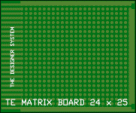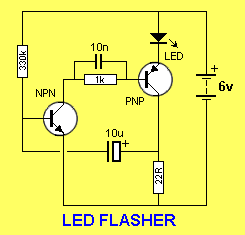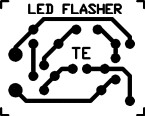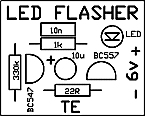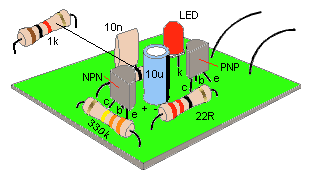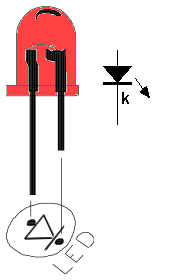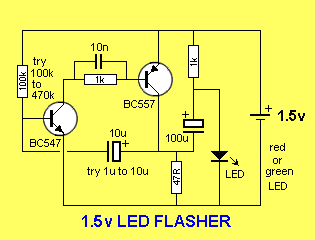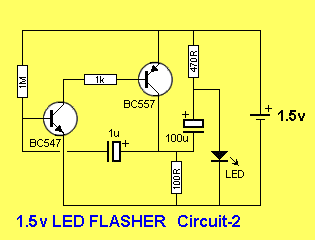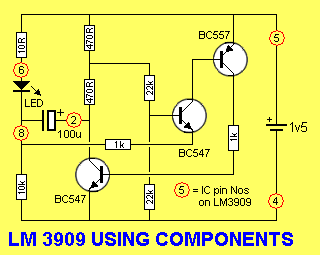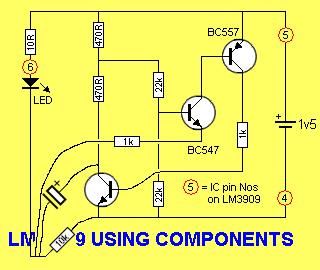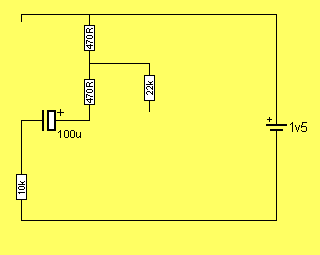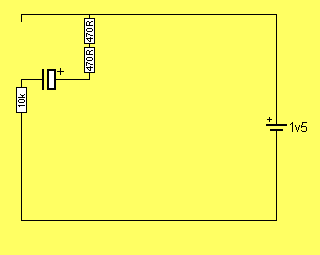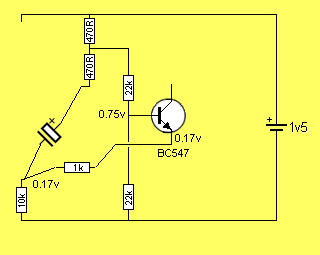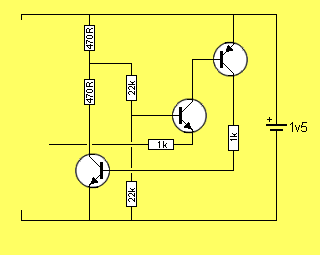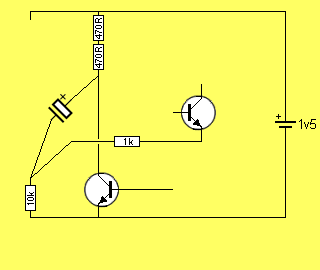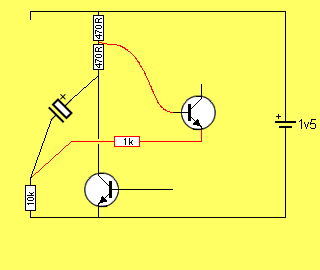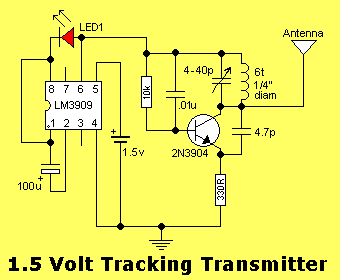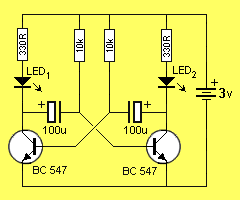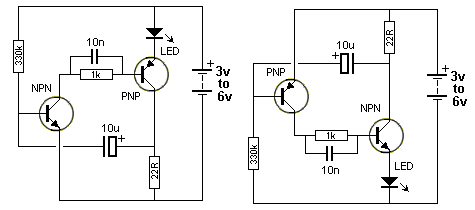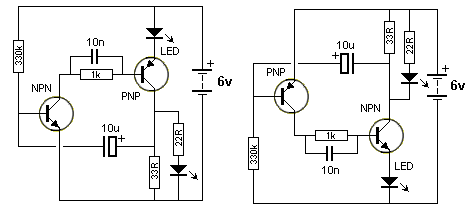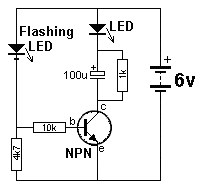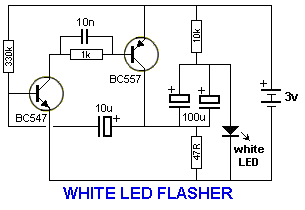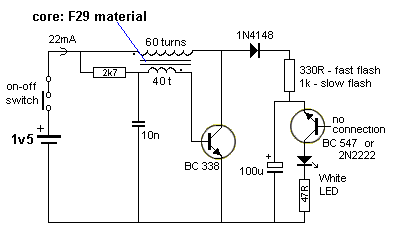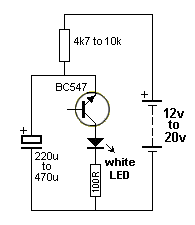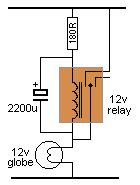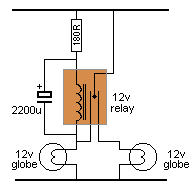(1) 파워 서플라이의 동작 원리...

1) 파워 서플라이(Power Supply)란?...
a) 파워 서플라이라는 것은 가정용의 교류(AC) 전류를 받아들여서, 컴퓨터에 필요한 3.3v/5v/12v 등의 직류(DC) 전류를 만들어주는 장치이다.- 컴퓨터는 결국 전기가 있느냐(1), 없느냐(0)의 (2 진수) 체계로 의사 소통을 하는 기계이므로, 전류는 컴퓨터에게 있어서 피나 식량에 해당되는 핵심 중의 핵심이다.- 따라서 전기를 공급해 주는 파워 서플라이(PSU)는 어떻게 보면 CPU나 RAM보다도 더 중요한 부품이므로, 보통 (컴퓨터의 심장)이라고도 한다.
b) 위의 그림은 컴퓨터에 관심 있는 사람이라면, 한 번쯤 들어 봤을 법한 (시소닉)이라는 회사에서 만든 500W 급의 파워 서플라이이다.- 시소닉에서 만든 (고급형) 파워 서플라이는 따로 있고, 위에 소개된 것은 (중저가) 형으로서, 2008년 8월 현재 80,000 원 내외이면 살 수 있는 제품인데, 개인적으로 가장 많이 추천해 주는 제품이기도 하다.- 효율성은 물론이고, 안정성 면에서도 자타가 인정하는 제품이고, 가격도 그리 크게 부담되는 정도는 아니므로, 앞으로의 설명은 이 제품을 기준으로 진행할 계획이다(제품 이름;SS-500ET-공급사;GMC).
이 제품에 관심이 있으면,This로 가서 제품 정보를 더 보고, 거기에서 제품 이름 옆에 있는 [리뷰]라는 버튼을 누르면, 리뷰에 관한 정보도 볼 수 있으므로 참고하시라.^^.

2) 파워 서플라이의 작동 원리...
***위의 그림은 앞에서 소개한 시소닉의 SS-500ET라는 제품의 내부 구조이다.
***아래에서는 위의 그림에 알파벳을 붙인 순서대로 설명을 할 것인데, 이 순서가
***바로 파워 서플라이가 가정용 교류(AC) 전류를 받아서, 컴퓨터에 필요한 직류
***(DC) 전류로 바꿔서 내보내는 과정이므로 관심있게 봐 주기 바란다.

a) EMI 필터부-- 파워 서플라이의 전원 코드가 꼽히는 가정용 콘센트에서는 보통 교류(AC) 220V가 공급된다. 그런데, 이 교류 전기는 매번 위 아래로 파동을 일으키는 것은 물론이고, 여러 원인에 의해서 컴퓨터에 해로울 수 있는 잡음 신호들을 발생시킨단다.- (EMI 필터부)라는 것은 가정용의 교류 전기를 파워 서플라이에 공급하는 초입 단계에서 그런 신호 잡음들을 걸러 주는 역할을 한다.-그리고 거꾸로 파워 서플라이의 (직류-직류 스위칭) 때 발생하는 (스위칭 잡음)을 가정용의 교류 입력 라인으로 역류하는 것도 필터링해서 막아주기도 한다.

b) 교류→직류 정류부-- (EMI 필터부)를 통과한 교류는 (교류-직류 정류부)를 통해 일단 311V의 임시 직류로 변하게 되는데, 다음 과정을 거친다.- ① 정류 회로-초당 50~60Hz로 (+)와 (-)를 번갈아 오가면서 진동을 하는 교류에서 (정류 다이오드)을 통해서 (+) 극성만을 걸러내는 과정이다. 비록 (+) 전류만을 걸렀다고는 해도 아직까지는 전압이 변하는 상태이므로, 이 과정을 거친 전류를 (맥류)라고 한다.→② 평활 회로-일정한 전압 이상이 들어오면, 기준 이상으로 들어 오는 전하를 충전시키고, 그 이하로 전압이 들어오면 충전시켜 뒀던 전하를 방전시키는 방법으로, 항상 (일정한 전압)을 유지시켜 주는 (정류 콘덴서)를 이용하여, 맥류를 일정한 전압에 비슷하게 만들어주는 과정이다.→③ 정전압 회로- 평활 회로를 통과한 맥류라고 해도, 아직은 건전지 등에서 나오는 것같은 일정한 직류가 되진 못한다. 그래서 최종적으로 (정전압 다이오드)와 (트랜지스터)로 이루어진 정전압 회로를 거치게 함으로써, 안정적이고 일정한 직류를 만들어 주게 된다.
보통 (고급 PSU)일수록 이 정전압 회로에 신경을 더 많이 써서, 비용 상승의 원인이 된다.

c) 직류 →직류 스위칭 변환부--(교류/직류 정류부)를 통해 일정한 직류로 변환된 전기를 다시 컴퓨터에서 필요로 하는 3.3V/5V/12V 등의 직류로 감압시켜주는 과정이다.-① 임시 직류로 바뀐 걸 (감압 트렌스)를 통해 PSU가 제공하는 최대 전압인 +12V로 만든다.→②그리고 -12V는 +12V를 역방향으로 출력시켜서 만들고.→③ +5V와 +3.3V는 +12V를 다시 (DC 감압 트렌스)를 이용해서 감압시켜서 만들고.→④-5V와 -3.3V는 +5V와 +3.3V를 역방향으로 출력시켜서 만들어 낸다.
-이렇게 컴퓨터에서 필요로 하는 +12V/-12V/+5V/-5V/ +3.3V/-3.3V 등의 직류 전압을 만들어내는 과정은 보통 여러 개의 Switch들을 변환시키는 방식으로 처리되므로, (스위칭 변환부)라고 한다.

d) 출력 필터 및 출력부--① 컴퓨터의 부품들은 전기의 질에 매우 민감하다. 따라서 (직류/직류 스위칭 변환부) 과정을 통과한 전기를 그냥 내보내지 않고, 최종적으로 한 번 더 필터링을 해서 각 부품들의 규격에 맞는 전압으로 맞춰서 출력을 시키는 과정이 (출력 필터 및 출력부)인 것이다.→② 이렇게 출력할 준비를 완전히 끝내게 되면, PSU는 비로소 Power good signal 신호를 메인보드로 보내게 되고, 이 신호를 받은 메인보드의 Timer Chip은 CPU에게 Reset signal 신호를 보내게 된다. 안정성이 확보되었다 싶으면 Reset signal을 끊어줌으로써, CPU가 드뎌 깨어나서 Clear 작업을 하고, Bios의 (FFFF:0000)
주소를 메모리로 읽어들임으로써, 컴퓨터 시스템의 Booting 과정이 시작되는 것이다.
e) 기타 회로들---위에선 파워서플라이가 구동되는 기본 회로에 대해서만 설명했다.
그러나, PSU가 제대로 만들어졌다고 하기 위해선,전력 효율과 전자파 감소 등에서 중요한 역할을 하는 Active PFC 회로나, 갑자기 정전이나, 낙뢰 등으로 과전압이 발생했을 때 시스템을 보호해 주는 과전압 방지회로 등, 갖춰져야 할 것들이 더 있음을 알아야 한다.
-메이저급 회사에서 만든 PSU와 묻지마(듣보잡) 회사에서 만든 PSU는 그런 안전 회로들을 얼마나 잘 구비했느냐와, 4 단계의 기본 회로를 구성하는 각종 부품들을 얼마나 믿을만한 것으로 썼느냐에서 차이가 나는 것이므로, 평소에 검색 등을 통해서 정보를 얻어야 한다.
(2) 파워 서플라이의 전압 종류...

1) 파워서플라이는 가정용 교류(AC) 전압 220V를 각 부품의 용도에 맞게 +12V/-12V/+5V/-5V/+3.3V/-3.3V 등의 직류(DC) 전압으로 만들어 주는 장치라고 했다.- 위 그림은 유명한 시소닉이란곳에서 만든 고급형 PSU인 SS-500GM과 중저가형 PSU인 SS-500ET의 옆면에 붙어 있는 스티커이다.- 이 스티커를 보면, 해당 PSU가 어떤 종류의 직류 전압을 제공하는지 알 수 있다.
2) 위의 (작동 원리)에서는 -12V/-5V/-3.3V 등에 대해서도 언급했는데, 이것들은 일부 회로의 신호 전달이나 컴퓨터 케이스에 붙어 있는 스피커 등을 구동하는데 썼던 것들이다.-그런데 요즘은 그 쓰임새가 거의 없어서, 구색을 맞추는 차원에서 -12V 정도만 뽑아서 표시해 주는 추세이다.
3) 그럼 가장 중요한 +12V/+5V와 +3(3.3)V 등에 대해서 그 용도를 설명해 보겠다.
a) +12V---모터가 돌아가는 것에 쓰이는 것이라고 보면 된다. 즉 메인 보드에 연결되지 않고, HDD, ODD, FDD 등에 직접 연결되어서 그 기기들의 모터를 구동시키거나, 아님 컴퓨터 케이스의 Fan의 모터를 구동시키는 데 쓰이는 게 +12V이다.-그리고 메인보드의 24 핀 커넥터의 +12V 라인도 이걸 끌어다 쓴다. 요즘은 CPU나 VGA 등이 고성능화되면서, +12 V 라인의 중요성이 커지고 있다.
b) +5V---HDD나 Power의 작동 LED를 켜고, 마우스와 키보드 등 구동할 때 이 +5V를 쓴다.
-그리고 역시 메인보드의 24핀 커넥터의 +5V라인에서도 이것을 끌어다 쓰고 있다.
c) +3(3.3)V---메인 보드에 있는 각종 IC 회로 등을 구동시키는데 쓰는데, 메인보드에 있는 24 핀 커넥터의 +3.3V 라인을 통해서 끌어다 쓰게 된다.- USB 장치 등도 이 전압을 사용하고 , - 이제는HDD의 대세가 된 SATA 방식의 HDD에서도 +12V/+5V 외에 이 +3.3V가 사용되는 것을 볼 수 있다.
4) +5V sb 전압의 용도...
a) 위 스티커 그림을 보면, 젤 오른쪽에 (+5V sb)라는 항목이 보인다. 여기서 (sb)는 Stand By의 약자로서, 쉽게 풀어보면 (+5V 대기 전압)이란 뜻이다. 그렇다면, 이 대기 전압의 용도는 뭘까?
b)+5Vsb는 전원 공급 상태가 정상적일 때, 상시로 활성화되는 대기전압이다.- 이런 대기 전압이 필요한 이유는, 4 개의 주요 DC 출력단(+3V/+5/+12/-12V)이 꺼져 있거나(Off), 비 활성화 상태일 때도 작동 대기 상태로 남아 있어야 하는 회로들이 있는데, 그런 것들에 전기를 공급할 때 쓴다.
c) 그리고 이 +5Vsb 대기 전압은 Lan Card나 Modem의 연결 상태를 상시로 확인하기 위해서도 사용되고 있으며, 외부 침입 탐지나 파워 서플라이의 보호 등을 위한 활동에도 쓰이게 된다.
d) 또 Windows 등의 OS나 각종 Application 등에서 컴퓨터의 전원을 켜거나 끌 때도 이 전압을 쓰는데, 시모스 셋업의 Power Management Setup에서 이 전압의 사용 유무를 설정할 수도 있단다.
5) +12V 라인의 중요성...
a) 위에서도 잠깐 언급했지만, 요즘은 CPU나 VGA 등이 고성능화되면서, VGA 하나 만으로도Full Load시에 200W 이상의 전력을 쓰는 경우도 있다.- 이런 추세에서 파워서플라이가 공급하는 전압들 중에서 가장 높은 전압인 +12V 라인의 전압의 중요성이 갈수록 커지고 있는 것이다.
b) 파워서플라이 관련 글을 읽다 보면, (정격 출력이 똑같이 500W인 PSU들이라고 해도, 평소 자기가 고성능의 VGA 등을 쓴다면, +12V Rail이 강화된 파워서플라이를 사용해야 한다)란 글을 볼 때가 있다.- 이 얘기는 PSU가 똑같이 정격 출력 500W를 뽑아내는 것이더라도, 상대적으로 +12V 라인 쪽에서 많은 전류를 뽑아낼 수 있는 것이 고성능의 VGA 등을 쓸 때 보다 유리하다는 뜻이다.
c) 위에서 비교한 고급형 SS-500GM과 중저가형 SS-500ET의 스티커를 보면, 다른 항목들은 다 같은데, 고급형인 SS-500GM이 두 번째 +12V 라인에서 뽑아주는 전류가 18A로, SS-500ET의 그 라인의 17A보다 큰 걸 알 수 있다. 그래서 두 개의 +12V 라인(레일)을 합쳐서 출력하는 Combined Output이 SS-500GM은 420W인 반면, SS-500ET는 408W로, 상대적으로 고급형인 SS-500GM가 +12V라인이 강화되어 있음을 알 수 있다.-현재 SS-500GM은 115,000 원 정도이고, SS-500ET는 82,000 원 정도로, SS-500GM이 약 33,000 정도 더 비싸게 팔리는데. 이렇게 비싼 이유는 +12V 레일을 강화하는데 드는 비용과 콘덴서 등의 내부 부품을 더 고급형으로 쓰고 있기 때문이다.
d) 또 한 가지 짚고 넘어갈 것은 SS-500ET가 중저가형이라고 해서, 고급형인 SS-500GM보다 불안정하거나 믿을 수 없단 뜻은 아니다.- 최소한 시소닉이란 회사에서 만들었다면, 비록 중저가형이라고 해도 믿을 수 있다.- 지금 이 글을 쓰고 있는 컴퓨터(Pentium 4 2.80GHz(노스우드))는 조립한지 5 년 정도 된 것인데, 조립할 때 시소닉의 중저가형 350W 파워서플라이(약 60 000원)를 선택했었다(그 때 똑같은 350W 짜리지만, 고급형으로 80,000 원이 넘는 제품도 있었음). 그런데, 이 넘은 5 년 동안 단 한번의 문제도 일으키지 않았고, 시스템을 고장낼 수도 있는 (정전 사태)를 여러 번 겪으면서도 거뜬하게 내 컴퓨터 시스템을 잘 보호해 줘서 애착이 많이 가는 PSU이다!^^.
(3) 파워 서플라이 커넥터들의 구조...

1) 지금까지 PSU의 작동 원리와 그런 과정을 통해서 얻어지는 전압의 종류 등에 대해서 간단하게 알아 봤는데, 마지막으로 파워 서플라이에서 제공되는 기본 커넥터들의 구조를 보면서, +12V/+5V/+3.3V 등의 전압들이 실제로 사용되고 있는지를 확인하면서 이 글을 끝마치려고 한다.
2) 위의 그림에서 a)로 표시한 것이 (4핀 커넥터)이다.- 이것의 용도는 IDE 방식의 HDD나 ODD 등에 전원을 공급하고, 때론 컴퓨터 케이스의 Fan을 구동시키는 데 쓰이고, 새로운 HDD로 자리잡은 SATA 방식의 HDD를 위한 전원선이 없을 때, 변환 커넥터를 연결해서 SATA용 HDD를 위한 전원을 뽑을 때도 쓴다.- 그리고 요즘 VGA(그래픽 카드)가 고성능화되면서, VGA를 설치할 때, 6핀 보조 전원을 요구하는 경우가 많은데, PSU가 구식이라서 6핀 보조 전원을 끼울 수 있는 6핀 커넥터가 따로 없다면, 이 4핀 커넥터를 6핀 보조 커넥터로 변환시켜서 쓰기도 한다.- 위의 그림을 잘 보면, 4핀 커넥터에 +12V와 +5V가 쓰이고 있는 것을 볼 수 있다.
3) 그림 b)로 표시된 것은 플로피 디스켓 드라이브(FDD) 용의 4 핀 커넥터이다.- 요즘은 FDD를 거의 쓸 일이 없지만, 가끔 필요할 때도 있으므로, 최신 PSU에선 간접 변환 커넥터 방식으로라도 FDD용 4 핀 커넥터를 제공하고 있다.- 이것에서도 역시 +12V와 +5V가 쓰이고 있다.
4) 그림 c)는 (4핀 보조 전원) 커넥터이다.- 컴퓨터를 처음 조립할 때, 24 핀 메인 커넥터만 끼우고, 4핀 보조 전원 커넥터를 끼우는 것을 잊어서, 컴퓨터를 작동시키지 못하는 걸 종종 볼 수 있다.- +12V의 쓰임새가 많아지면서, 그것을 더 보강해 주기위한 커넥터이므로, 컴퓨터를 조립할 때 반드시 연결시켜 줘야 하는데, 그림을 보면 +12V 핀이 2 곳에서 쓰이고 있음을 알 수 있다.
5) 그림 d)는 이젠 HDD의 기본 방식으로 자릴 잡은 SATA HDD를 위한 전원선 커넥터이다.
그림에선 잘 안 보이는데 , 위에서부터 (+3.3V 핀 3개→COM 핀 3개→+5V 핀 3개→COM 핀이 다시 3개→마지막으로 +12V 핀이 3개)가 있어서, 총 15 개의 핀이 있는 (15핀 커넥터)이다.- COM은 Ground(접지)용의 (-) 핀을 말한다.- 요즘 새로 만들어진 PSU들은 최소한 2 개 이상, 많게는 10개 이상까지 이 SATA용 HDD를 위한 15핀 전원 커넥터를 가지고 있고, SATA용 HDD를 살 경우엔 15핀 커넥터가 없거나 부족할 것에 대비해서, (4핀 커넥터)를 (15핀 커넥터)로 바꾸는 변환 선을 따로 제공하기도 한다.-이 15핀 커넥터에선 +12V/+5V/+3.3V 전압이 모두 쓰이고 있는 것이다.
6) 그림 e)는 메인 보드에 전원을 공급하는 중심 역할을 하는 (24핀 커넥터)이다.- 오른쪽에 확대해 논 그림을 보면, 여기에는 +12V/+5V/+3.3V 전압이 다 쓰이고 있다.- 요즘 CPU나 RAM 등 주요 부품을 보면, 작동 전압이 1.5V 내외이다. 따라서 메인보드는 +12V/+5V/+3.3V 등을 그냥 공급하지 않고, 각 부품에 맞게 재조절을 해서 CPU나 RAM 등에 보내 준다.- 그리고 예전의 Pentium 4 시절에는 메인 전원이 20핀 커넥터를 쓰고 있었는데, 요즘은 이렇게 24 핀 커넥터로 바뀐 상태이다.
만일 예전의 20핀 커넥터를 쓰는 파워서플라이라면, 시스템에서 전력을 크게 요하는 경우가 아닌 한 위쪽을 서로 맞춰, 메인보드의 24핀 커넥터에 PSU의 구식 20핀 커넥터를 끼워도 컴퓨터가 작동은 된다고 한다.-이런 작동이 가능한 것은 24핀 커넥터에서 새로 추가된 4 개 핀은 제일 아래쪽에 있는 (+12V/+5V/+3.3V/COM)들인데, 이것들은 이미 예전의 20핀 커넥터에도 다 있던 라인이고, 그것들을 보충하는 차원에서 추가한 것이므로, 20핀 커넥터의 PSU라도, 믿을 만한 제품이라면, 요즘의 24핀 커넥터를 가진 메인 보드에도 사용은 할 수 있다는 뜻이지만, 그렇게 권장할 만한 것은 못된다.
7) 파워 서플라이 (단독 작동 테스트) -- 그림 f)의 24핀 메인 커넥터를 확대해 논 것을 보면, 16번 핀인 PS-ON과 15번 핀인 COM를 빨간선으로 연결시킨 걸 볼 수 있다. 컴퓨터를 사용하다보면, 조립할 때 PSU가 정상적으로 작동되는지 테스트해보고 싶을 때도 있고, 조립후 사용하다가 컴퓨터에 문제가 생겼을 때, 그 원인이 PSU인지를 테스트해 볼 일도 생긴다.- 이럴 때는 PSU의 24 핀 메인 커넥터를 메인 보드에 연결해서 케이스의 Power 스위치로 작동시켜 보는 것이 아니라, PSU를 메인보드와 완전히 분리시켜서, PSU가 정상적으로 작동하는지 단독 테스트해 봐야 할 때도 있다.- 이땐 메인보드에 끼웠던 24핀 메인 커넥터를 빼서, 위에 표시한 두 핀을 (양쪽 끝만 피복을 벗긴 전선)으로 연결시켜주고, 파워서플라이의 전원선을 가정의 콘센트에 끼운 담에 PSU의 뒤쪽에 있는, (1/0)으로 되어 있는 PSU 작동 스위치를 켜서(1로 스위칭), PSU의 정상 유무를 테스트할 수 있다. 이때 연결에 사용된 전선의 피복이 벗겨진 부분을 만지면 감전되므로 조심해야 한다.-그리고 COM 단자는 15번 핀을 쓰지 않고, 그 아래쪽에 있는 17번 핀의 COM 단자를 써도 상관없다.
-----------------------------------------------------------------------------------
***결론***
허접하면서 길기만 한 글을 여기까지 읽으면서 따라오시느라 고생하셨다.^^.
이런 글을 처음 읽으시는 님이라면, 당신히 어렵게 느껴질 것인데, 다음 사항은 꼭 알고 넘어가자.
1) 컴퓨터에서 파워 서플라이는 무쟈 중요하므로, 돈을 아끼지 말고 믿을 만한 제품을 구매하자.
2) 가정용 220V 교류(AC) 전압은 (4 단계)를 통해, 컴퓨터에 필요한 직류(DC) 전압으로 변환된다.
3) PSU에서 이상이 없다는 Power Good Signal 신호를 보내야 시스템의 Booting이 시작이 된다.
-즉 만일 PSU가 내부적으로 이상 있다면, 제 아무리 비싼 컴퓨터라도 부팅 자체가 안 된단 뜻이다.
4) 점차 CPU나 VGA가 고성능화되는 요즘, +12V 라인의 중요성이 커지고 있고, 따라서 고출력의
파워서플라이인 경우에는 +12V Rail(Line)을 무려 독립적으로 4 개 이상 가지고 있는 PSU도 있다.
(글 중에 잘못된 곳이 있으면, 언제든지 지적해 주세요...확인하고, 감사한 맘으로 고치겠슴다^^)
------------------------------------------------------------------------------------



















 LSP5502.pdf
LSP5502.pdf 시거잭 USB 전원.fzz
시거잭 USB 전원.fzz




















